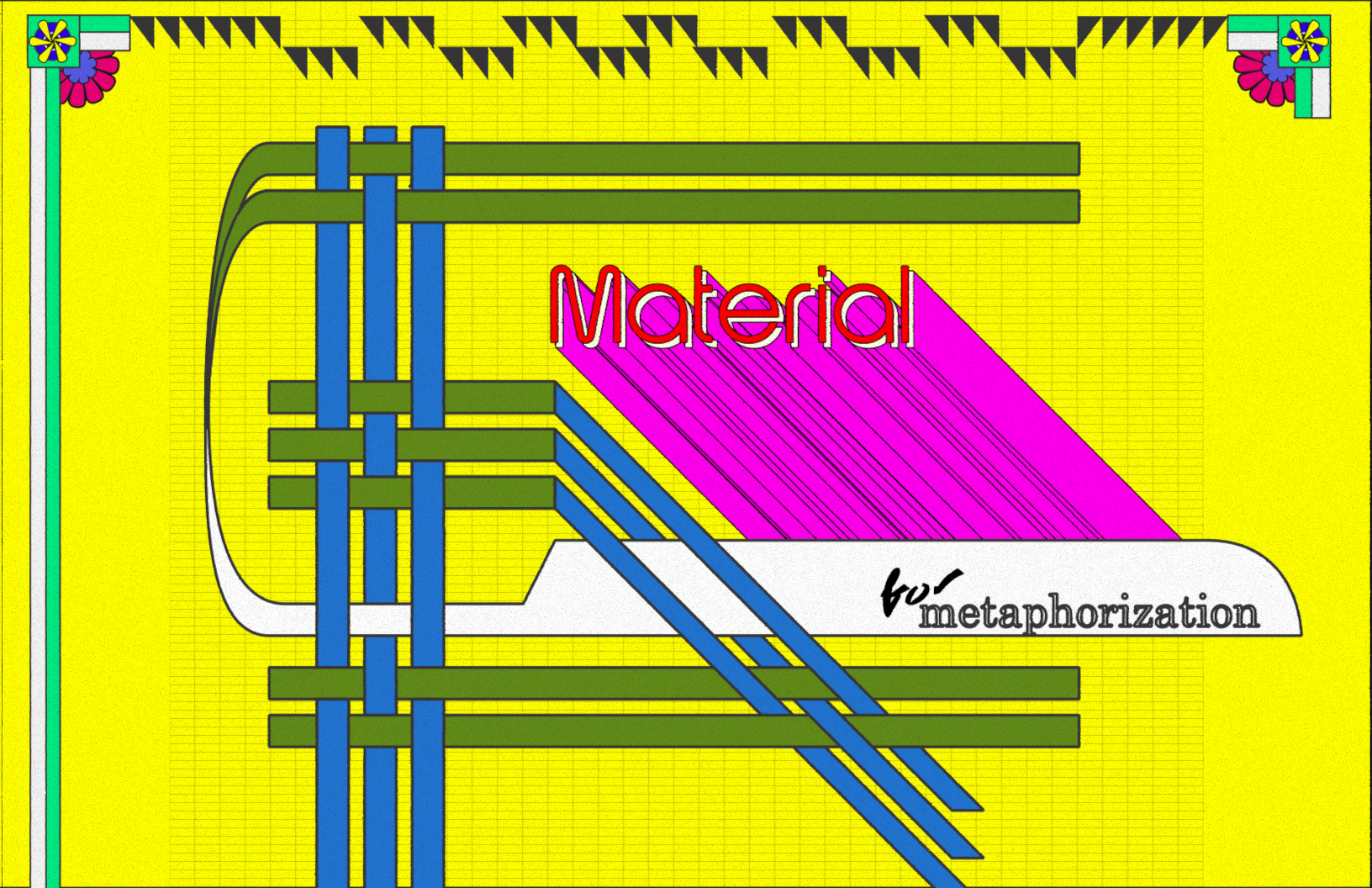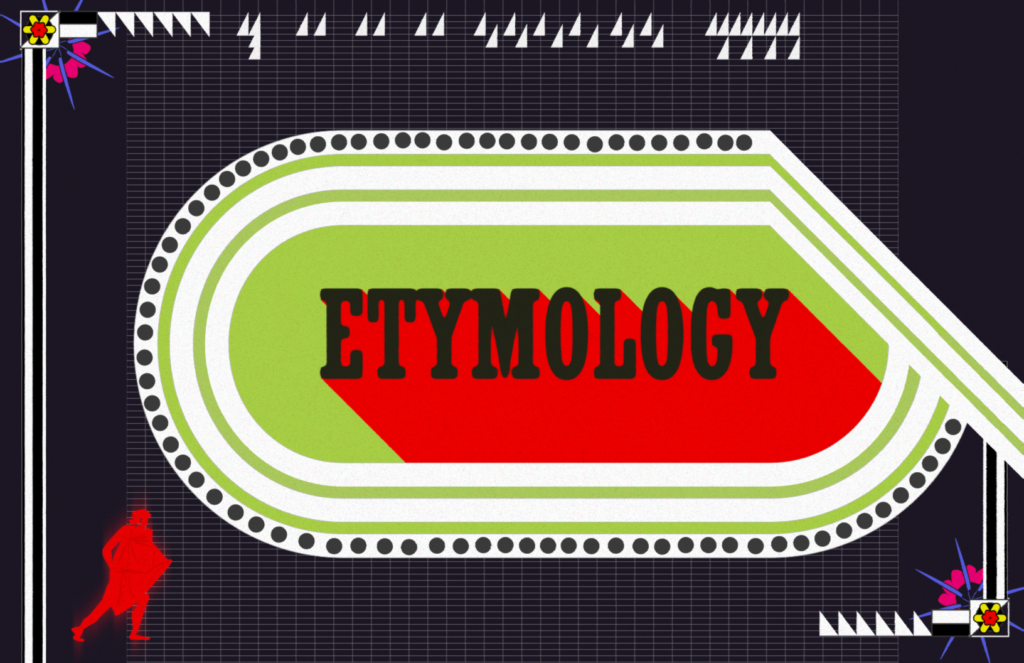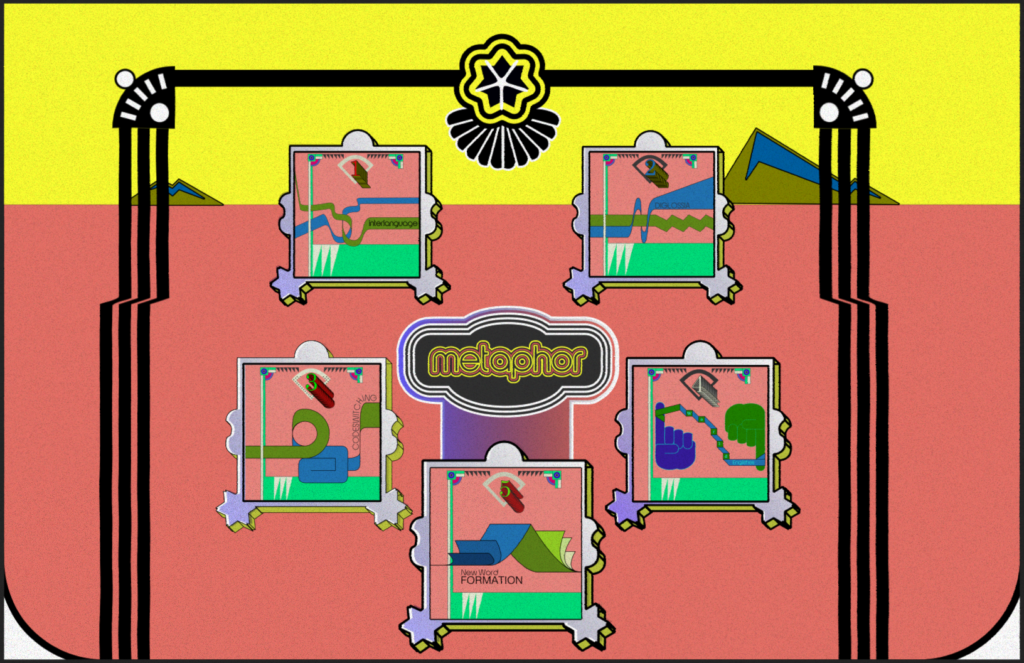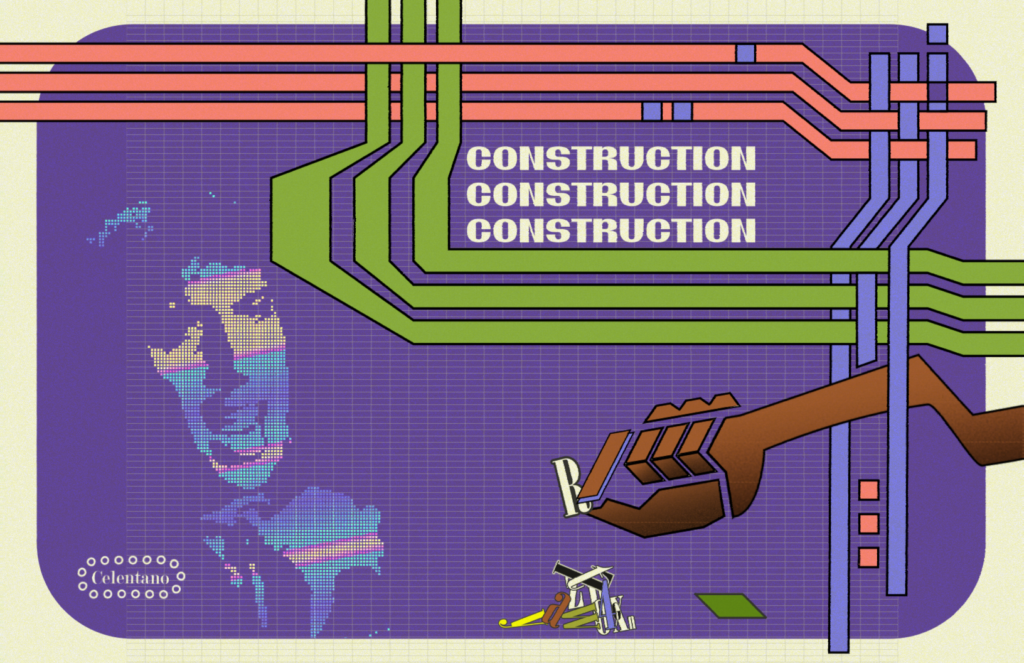Material for Metaphorization
How can the expansive potential of language illuminate interdisciplinary artistic forms?

Translation
Language is a medium is an object is a subject is a symbol is a structure, with nearly infinite capacity to metaphorize.
In March 2022, I attended the presentation of Thai filmmaker Anocha Suwichakornpong’s debut performance work FREETIME, which was described as “a live staged performance of a film in progress, research for [Suwichakornpong]’s forthcoming feature.” In essence, an interdisciplinary experiment.
I remember being particularly struck by the numerous acts of translation contained within the FREETIME performance: between the actors delivering live Thai language scripts and real-time English subtitles projected on the cinema screen; between text (subtitles) as film and reality as image. At the post-performance Q&A for FREETIME, audience members asked about the way that American and Thai publics differed in their reactions to her films. In her response, Suwichakornpong was compelled to translate in still more ways: between histories, cultures, and expectations.
Suwichakornpong’s FREETIME, in terms of content and form, also brought to mind notions of capaciousness.1 Language itself is similarly capacious: its lexical items and individual words can be used to express metaphor and comparisons between multiple entities, but language and linguistic concepts can also themselves serve as the materials for metaphorization.
My interest in both the potential and limits of language stems primarily from my academic background in linguistics, in addition to over ten years of experience teaching language and culture (mostly Swedish and English as a Second Language) in alternative learning contexts. Language is a complex system, and in the case of human language, one that is inextricably linked to culture, be it norms, values, objects, etc. It was most likely this entanglement between language and culture that caused me to become interested in the boundaries between seemingly disparate disciplines, which is now the primary focus of my current artistic practice. Similarly, my experience with the numerous subfields of linguistics—everything from phonetics (the study of speech sounds’ physiological production and acoustic qualities) to sociolinguistics (the study of language in relation to social factors, including region, class, gender, etc.)—helped build a capacity for moving between levels of multifaceted systems. I currently apply this capacity in my role as an arts administrator, primarily within museums and cultural organizations, where I’ve begun to synthesize and draw connections to my artistic practice via such notions as the aesthetics of administration and culturally-specific modes of organizing information.
This essay is intended to be a similar space in which synthesis might transpire freely and with broader generative potential. A welcoming, blurry space like the Walker Cinema stage on which Anocha Suwichakornpong experimented, where seemingly unrelated concepts get extended, blended, or investigated. Overall, I aim to utilize select concepts from the field of linguistics as metaphors for reframing artistic disciplines, as well as interdisciplinary art practices. I’m interested in how multilingualism might serve as a model for interdisciplinary artistic practices or for institutions seeking to support artists working cross/interdisciplinarily. Due to the slipperiness of both disciplinary labels and boundaries, the particular linguistic concepts I am most curious to explore are those that represent or convey some degree of hybridity, “bothness,” maneuverability, and/or agility. My goal is to help pollinate the discourse on artistic disciplines with a “non-artistic” discipline (linguistics) in the service of discussing and supporting current artistic practices. I also hope that this essay will be useful2 for artists, institutions, and importantly, grantmakers, particularly those seeking to expand their funding from siloed disciplines to more interdisciplinary categories. Novel tools and resources are required to serve artists who work interdisciplinarily, and the solution should not simply be to create new approaches based on an unhelpful mashup of discipline-specific models of the past.

Etymology (Evolution of Meaning Throughout Time)
Polytropos3 is the first adjective Homer uses to characterize Odysseus in the Odyssey. It literally means “much turning,” “much traveled,” or “much-wandering,” but can also be used metaphorically to denote “cunning” or “crafty.” In Emily Wilson’s translation of the Odyssey (Wilson being the first woman to translate the work into English ) the epic poem begins: “Tell me about a complicated man.” Polytropos as “complicated” simultaneously connotes Odysseus’s dishonesty, his schemes and suffering, but also his wanderings and versatility. Polytropos and its associated versatility are often discussed in conjunction with a similar concept: polyglot. Polyglot derives from mid-17th-century French polyglotte, from Greek poluglōttos, from polu– meaning “many” and glōtta meaning “tongue.” A person can be a polyglot (noun), but regions or publications can also be polyglot (adjective) in nature.
Delving into etymological origins serves to highlight the basic, but often overlooked, fact that words have extensive and complex histories. In seeking to understand interdisciplinarity and contemporary delineations of artistic disciplines more deeply, I have often found it helpful to examine not only the history of a particular (artistic) discipline, but also from where the name of the discipline derives. The etymology of sculpture, for example, is from late Middle English via Latin sculptura, from sculpere meaning “carve.” Similarly, the word “drawing” comes from Middle English in the sense “pulling” or “to draw a load” via Old Norse dráttr. The term photography literally means “drawing with light” and was supposedly coined by scientist Sir John Herschel in 1839, utilizing the Greek words phos, meaning “light,” and graphê meaning “drawing or writing.”
Reengaging with the notions of polytropos and polyglot has also made me (re)consider and attempt to rearticulate my thoughts on why language and multilingualism—and by extension interdisciplinarity—matter. I propose that learning multiple languages is important, not as a way of reinforcing particular nation-states or rigid identities, but as a means of increasing the number of individuals with whom one can have reciprocal exchange—of ideas, culture, feelings, etc. I believe that engaging with multiple disciplines can work in very much the same way.
Everyone has some experience with language. Many artists, especially those working in non-verbal forms, already have significant opinions about how language is imposed on and/or conditions their work, but I would encourage anyone engaging with this essay to consider becoming (even more of) a linguist. The subsequent section facilitates that invitation.

Metaphor
The following represent a selection of concepts from the field of linguistics with the capacity to serve as metaphors for modeling alternative conceptualizations of both artistic disciplines and interdisciplinary art practices. I thought it might be most useful to present brief overviews of the relevant concepts, followed by related questions and ideas for further consideration. In most cases, substituting distinct languages or language varieties with disciplines (artistic and otherwise) best activates the metaphor.
InterlanguageAn interlanguage is an idiolect (i.e., the speech habits proprietary to a particular person) that has been developed by a learner of a second language, which preserves some features of their first language. For example, if a native English-speaking American college student is studying Mandarin Chinese, the specific form of Mandarin that they utilize before achieving complete fluency would be considered an interlanguage. In this interlanguage, the individual might mistakenly utilize Mandarin vocabulary with English word order, or they might use correct Mandarin sentence structure, but insert English words for the Mandarin terms that are still unknown to them. The interlanguage is neither fully Mandarin nor fully English. It is a blend, something else entirely. Interlanguage fossilization occurs when people learning a second language continue taking rules from their native language and incorrectly apply them to the second language in perpetuity.
Which artists could be said to utilize a "disciplinary interlanguage"? How might institutions and curators support artists specifically choosing to work with disciplinary interlanguages? Would "fossilization" be a generative point of departure and/or a confining position?
DiglossiaDiglossia is a situation in which two distinct varieties of a language are spoken within the same speech community. Bilingual diglossia is a type of diglossia in which one language variety is used for writing and another for speech. Diglossia is distinct in that the “high” version of a language isn’t used for ordinary conversation and usually has no native speakers. Examples include the “high” forms of Egyptian Arabic, Greek, and Haitian Creole, with their “low” standard form equivalents being used in distinct social functions.
If we use diglossia’s distinct language varieties as a metaphor for specific disciplines, how can artists, curators, institutions, etc., reconsider or increase their awareness of which discipline is being privileged when? How are an individual interdisciplinary artist’s disciplines separated and in what contexts? What specifically is the effect on the resources required to facilitate work when an artist is working interdisciplinarily?
Code-switchingCode-switching occurs when a speaker alternates between two or more languages, or language varieties, in the context of a single conversation or situation. For example, a young Ethiopian-American, Oromo-English-speaking child might use Oromo at home and English in math class, but Oromo at recess with other Oromo-speaking friends. Similarly, “research conducted in schools suggests that Black students selectively code-switch between standard English in the classroom and African-American Vernacular English (AAVE) with their peers,” which impacts their social standing with each intended audience.
What are examples of "single conversations" or situations in which “disciplinary code-switching" might take place? How might this differ for time-based vs. static vs. social practice art? How can individuals, institutions, funders, etc. increase their awareness of these situations and to what end?
World EnglishesThe term World Englishes refers to the differences in the English language that emerge as it is used in various contexts across the world. For example, the distinct varieties of English spoken in Nigeria, India, Barbados, as well as the United States, Great Britain, and Australia. Speakers of each of these varieties are all native English speakers and none of the varieties “more English” than any other.
In which situations are certain individuals’ claims to particular disciplines or specific forms of those disciplines either reinforced or rejected? Which individuals? Who decides?
New word formationAffixation (use of suffixes or prefixes), compound words (combining two or more words), and transformation (changes in a word’s morphological structure) are all examples of processes by which new words are created.
How might these processes serve as helpful models for artists to experiment with approaches to their own inter/multi/non/omni/transdisciplinary practices? What structures might prevent such experimentation? Why?

Construction(s)
Near the end of 1972, Italian pop star Adriano Celentano released a song that would go on to top the charts at number one in his home country. Amazingly, the song did so despite the fact it was not performed in Italian, nor English, nor any recognized language at all. The song, “Prisencolinensinainciusol,” was instead written using words that mimicked the way English sounded to Celentano and how he perceived it to sound to other non-native English speakers. Years after the success of “Prisencolinensinainciusol,” Celentano expressed that his intent had been to write a song that had, as its central theme, the inability to communicate, in an attempt to break down language barriers and inspire people to communicate more. In order to do this, Celentano noted, he had to write a song where the lyrics didn’t mean anything. Following Celentano’s 1973 performance of “Prisencolinensinainciusol” on Italian television, the song rocketed to number one not only in Italy, but also Germany, France, and Belgium.
Besides serving as a charming anecdote, both the nonsense language present in “Prisencolinensinainciusol” and audiences’ reactions to the song’s release offer additional and real possibilities for thinking through the inter-, anti-, multi-, non-, omni-, and transdisciplinary: How might we similarly confuse, connect, critique, and capacitate disciplines, artistic or otherwise, in service of creative practice? Like J.R.R. Tolkein’s famed Quenya (Elvish) or Sonja Lang’s Toki Pona, I might posit that one could categorize Celentano’s creation as a constructed language, and, by extension, Celentano himself as a linguist. In response to Celentano, I also find myself asking: At what point does “Prisencolinensinainciusol’s” non-English become Italian or its non-Italian become English? Can they be separated? Does it matter if they can? Does the song’s success reside somehow or somewhere in the dissolvement—though perhaps not total erasure—of boundaries? How do we even recognize and articulate what a disciplinary boundary looks like or where precisely in space, time, culture, etc. it exists?
Here I turn to the sorites paradox4 (my favorite paradox), to consider a way through the question of when a discipline ceases to be itself and becomes something else. The sorites paradox originates in an ancient puzzle that appears to have arisen from the issues caused by vague terms—i.e., terms with blurred or fuzzy boundaries of application. Pile, blue, bald, and old are all examples of vague terms: no clear line divides blue things from green things, people who are bald from people who are not, or old people from middle-aged individuals. Because the predicate “pile” has unclear boundaries, it seems that no single grain of sand can make the difference between a number of grains that does, and a number that does not, constitute a pile.
In other words, if a pile is reduced by a single grain of sand at a time, at what exact point does it cease to be considered a pile? Similarly, as David Lukas notes in Language Making Nature5, while discussing the fuzziness and limits of language:
“[T]he word lake might be a convenient label when you point to the middle of a large body of water, but how do you define a lake’s boundaries where its waves lap ephemerally against the shoreline, or when its shoreline is a marsh, or when the streams flowing into or out of the lake belong to the same body of water? As soon as you try to map precise boundaries in the real world, you discover that an idealized thing like a lake has no easily defined edges.”
So, if a filmmaker’s film incorporates elements of live performance, at what point does the work become a play? At what point (if) does the individual cease to be (merely) a filmmaker? At what point (if) does their practice become interdisciplinary? While the answers to these questions may be indefinite, one aspect that definitively matters is who (or what) gets to decide. Whether individuals with influence in the field, institutions, or the artist themselves, the reality is almost always linked to power.
Language too has persistent connections with power: its capacity to “move” us or create influence, but also how it reflects the collective or historical power of the communities that use and control it. I was reminded of this latter facet during my visit to the Walker Art Center’s exhibition Jannis Kounellis in Six Acts via the work Untitled 1963. Untitled 1963 was a large painting in the second gallery consisting of oil and enamel on canvas and depicting the oversized face of an airmail envelope, addressed to “Counellis.” Curious as to the apparent misspelling, I eventually learned that Italian fascist leader Mussolini had, in 1929, essentially banned from official use all letters (including K, J, W, X, Y) that did not already appear in the Italian alphabet. Consequently, Kounellis, who emigrated from his native Greece to Italy at the age of 20, had been forced to rebrand his own surname to “Counellis.” Apparently, it wasn’t until the late 1980s that Kounellis was retroactively able to reverse the spelling on official documents and the name plate of the family home.
Artists, institutions, curators, publics, and grant-makers have shifting and ostensibly varying degrees of power within the “art world.” As artists continue advocating for themselves and institutions and grant-makers seek to expand their funding and other mechanisms for artistic support toward the interdisciplinary, I hope this essay might be useful for considering what type of hybridity each is or is not reinforcing, as well as what new constructions might look like.